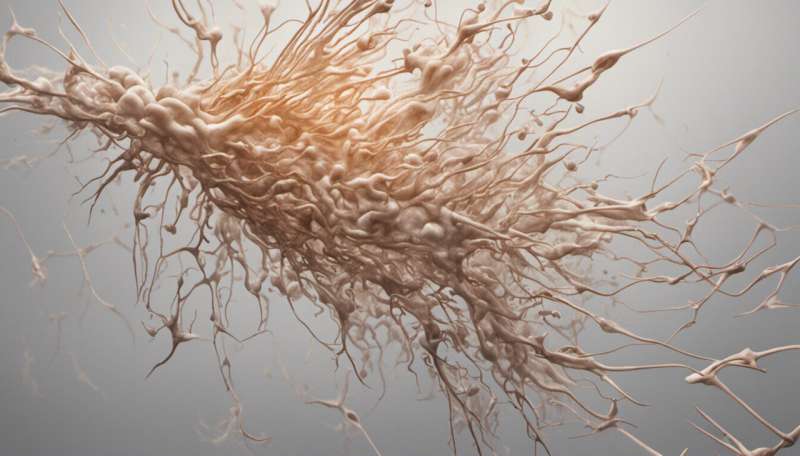Credit: AI-generated image (disclaimer)
Antibiotic resistance poses a serious threat to human health. Resistant infections now cause more than 750,000 deaths per year and are predicted to increase to 10 million deaths per year by 2050. It is known that treating patients with antibiotics is associated with the emergence of resistance—and worse outcomes for patients. But how resistance emerges during infections remains poorly understood.
In a new study published in Nature Communications, an international team led by Oxford University scientists reports that rapid bacterial evolution interacts with host immunity to shape both the rise, and fall, of resistance during infection.
This study highlights the need to understand better how our immune system works with antibiotics to suppress bacterial infections.
Craig MacLean, co-author and Professor of Evolution and Microbiology at the University of Oxford, said: "Our study suggests that natural immunity can prevent resistance during infection and stop the transmission of resistant strains between patients. Exploiting this link could help us to develop new therapeutics to use against bacterial pathogens and to better use the antibiotics that we have now."
The research described in this article is part of a larger ASPIRE-ICU study, which stands for Advanced understanding of Staphylococcus aureus and Pseudomonas aeruginosa Infections in EuRopE—Intensive Care Units. The ASPIRE-ICU trial was conducted by the COMBACTE consortium and brought together multiple collaborators from leading academic research labs along with AstraZeneca scientists. The COMBACTE consortium is a major academia-industry collaboration exploring new approaches to antimicrobial resistance.
The collaborators discovered that antibiotic treatment killed the overwhelming majority of bacteria causing the infection, but bacteria with resistant mutations continued to grow and replicate during treatment. However, they also learned that the resistant mutants had low competitive ability, leading to the loss of resistance after treatment as resistant mutants were replaced by sensitive competitors that managed to escape antibiotic treatment.
Professor MacLean said: "Both the rise and fall of resistance during infection are simple and elegant examples of evolution by natural selection."
Host immunity helped to suppress the infection, probably removing >90% of resistant mutants that were present at the start of antibiotic treatment. Host immunity also eventually eliminated the resistant populations that were present after treatment.
The team was able to generate these insights by tracking changes in the bacterial population in a single subject at an unprecedented level of resolution, and combining this with data on patient health and immune function. The bacterial pathogen in this case was Pseudomonas aeruginosa, an opportunistic pathogen that mainly causes infections in hospitalized patients and in people with cystic fibrosis or bronchiectasis.
Professor MacLean said: "This is the kind of study that I could have only dreamed of 10 years ago. Technological progress was certainly important to this project, but the real key to our success was increased collaboration and cross-talk between medical researchers and evolutionary biologists."
More information: Rachel Wheatley et al. Rapid evolution and host immunity drive the rise and fall of carbapenem resistance during an acute Pseudomonas aeruginosa infection, Nature Communications (2021). DOI: 10.1038/s41467-021-22814-9
Journal information: Nature Communications
Provided by University of Oxford























